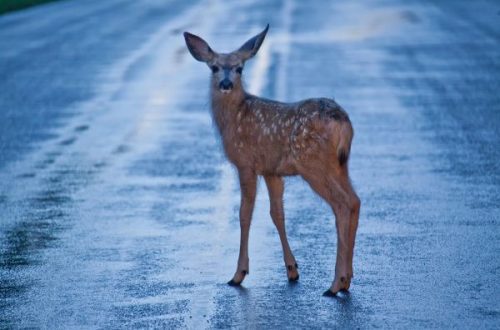
Firefly Magic
If there is genuine magic in this world, it must surely have graced the firefly. A humble beetle that glows with a small, soft light, the firefly is a tiny miracle of evolution. When I was a kid in rural, upstate New York, summer evenings sparkled with fireflies. Twinkling in the grass, they were magical and mesmerizing.
Also called glowworms or lightning bugs, fireflies have the ability to bioluminesce. Bioluminescence is the production of visible light by living things. This ability is not confined to fireflies, many other organisms can glow with their own special light – certain species of algae, mushrooms, jellyfish, worms, squid, and fish, to name a few. Foxfire is the picturesque term for bioluminescence produced by some types of forest-dwelling fungi.
Of the over 2,000 species of fireflies in the world, all can glow as eggs and as larvae. Most, but not all, retain the ability to glow as adults. The light is produced by a chemical reaction that produces light but virtually no heat.
The function of glowing as an egg or a larva seems to protect the baby firefly by advertising a warning to potential predators that it contains potentially toxic chemicals. This strategy doesn’t always work; some frogs don’t seem to be affected by the toxins and will eat fireflies until their bellies glow.
In the adult firefly, the glow has a whole new meaning: mating. Each firefly species has a unique flashing pattern. The males fly low over the vegetation and flash their characteristic pattern. Females sit on the plants and wait. When a receptive female of the same species recognizes a male’s flash pattern, she flashes back. The male lands near her and they happily flash their passion lights before mating.
Ideas for connecting with nature:
- Close your eyes, breathe deep, and imagine lying in a moist grassy field on a warm summer evening. All around you are fireflies emitting their soft glow, flashing and dancing in the night. Drink in the enchantment of this magical natural setting.
- If you’re fortunate enough to live where fireflies are present, spend some time with them. It’s tempting to try to capture these little jewels and put them in a jar, but please don’t. Enjoy them, but let them be free.
- If you live in firefly country and would like to attract these enchanting creatures to your yard and garden, try these tips: avoid the use of chemical pesticides and herbicides; limit extra lighting at night; and plant or preserve tall grass, small bushes, and low-hanging trees.
- Plan a firefly vacation. A few places in the world host special firefly events. The Great Smoky Mountains National Park in Tennessee has guided nighttime walks to view their famous synchronous fireflies (the fireflies in a particular area all flash in simultaneous rhythms). Or try a nearby national or state park. Visitor’s information at each facility should be able to tell you if there are good firefly-viewing areas. Be sure to check with your destination for the best time to visit, as the firefly’s peak display period is quite brief. For more firefly info, visit www.firefly.org.
If you would like to receive weekly emails from me with nature-inspired goodness, please click the button below. I’ll also send you a free gift – a quick downloadable guide to nature journaling.




